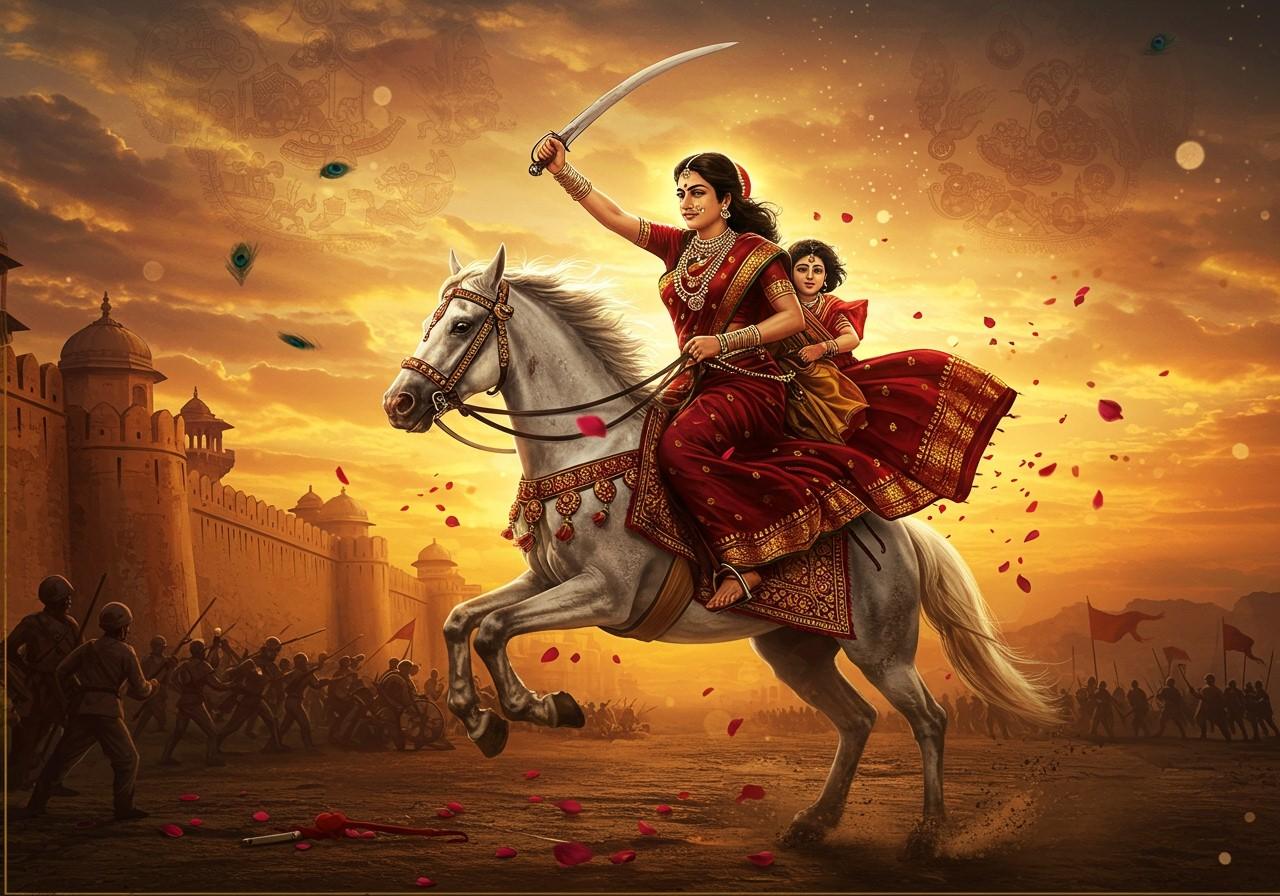Sumant Chandwadkar
CONCEPT OF HEALTH: As medical science proclaims health is not merely the absence of disease or infirmity but it is well-being at the physical, mental and social levels. The yogic science has added one more dimension to it and that is spiritual Health.
Maharshi Yogi Aurobindo has stated the evolution of man takes place from Animal Man to Divinity. At the animal-man level man behaves based on natural instinct (food, fear, sleep and sex) and the result of it, is sickness (ill health). As the man starts overcoming his natural instincts he enters in zone of normal Man, the region of normal health. If he goes still further and overcomes the basic natural instincts and uses them only for leading the life then dormant faculties start coming up vividly and this is a field of Super Man. In this field of superman level, many of his / her qualities like creativity, literature, vocabulary, research-oriented mind as well as a spiritual power which is beyond the perception of five senses come out. Further growth leads man to unravel the deeper layers of consciousness and this will lead the man towards Perfections (Divinity). And at this level, the physical illness does not matter to his mind or overall existence. Many Saints and Avatar-Purush are examples of it like Ramakrishna Paramhansa, Swami Vivekananda, Mahapurush Srimanta Shankardeva etc.
YOGA - THE BETTER UNDERSTANDING:
Yoga is far from physical or breathing exercises only. It is also not intended to acquire some supernatural powers. This is truly a total science, which needs to be understood closely. ‘Yujyate anena iti yogah’ says the Shashtras. Yoga is that which unites. Yoga means the union of Jivatma (Individual Self) with Paramatma (Cosmic self). The process of union starts from individual life and spreads all over the cosmos. The individual unites with family; the family with the society, the society with the nation, the nation with the cosmos and ultimately everything with Dharma (way of life, that holds everything good for everybody) i.e. when the individual experiences ‘Vasudhaiva Kutumbakam’, which means the whole universe is one family. Yoga not only gives fitness and vigour to the body but also invigorates the Prana (Vital energy of being), mind, emotion, intellect and spirituality, which engulf the whole personality of a human being.
Scripture gave us four streams of yoga for the holistic development of an individual i.e., Karma yoga (Secrete of Action), Raja Yoga (Enhancing the Will-Power), Bhakti Yoga (Science of Emotion Culture), Jnana Yoga (Path of intellect) by which one can be relaxed, contemplative, Happy and ultimately achieve the great height in spirituality.
“Each soul is potentially divine. The goal is to manifest this divinity within by controlling nature, external and internal.” This is what Swami Vivekananda proclaimed a century ago about Yogic life. He also puts yoga as a means of compressing one’s evolution into a single life, or a few months or a few days or hours of bodily existence. In other words, Yoga is the conscious process of growth by which human beings can merge into ultimate consciousness (Ishwara).
DEFINITIONS OF YOGA :
‘Yogah karmasu kaushalam’ says the Bhagavad-Gita. It means dexterity in action is yoga. Dexterity involves three main points: maximum perfection, a relaxed mind while doing action and all inclusive approach.
‘Yogah Chitta Vritti Nirodhah’ is a sutra in Patanjali Yoga Sutra. Gaining mastery over the mind is yoga. Mastery over the mind involves understanding the different desires that the mind demands and the requirement and urgency to attain them. If the desire is not worthy to fulfill then drop it by using our conscience and the next important point of mastery is to reduce the speed of mind and enjoy silence.
‘Samatvam Yoga Uchyate’, this concept is also from Bhagavad-Gita. Equanimity in emotional existence is yoga. Observe the emotions; they are never in a balanced state. Why is equanimity necessary? It is because equanimity saves his energy and he can use it for a better purpose. Likes and dislikes, excitement and depression are four negative corners of the emotional existence. When a man likes something, he feels attachment and if he dislikes it, he hates it. In the same way, if he gets success, he is in an excited state and if he fails, he falls into depression. Man is a victim of this nature. This nature of man made him a slave tohis surroundings.
‘Manah Prashamanopayah yoga ityabhidhiyate’, is for the development of intellectual existence. Yoga is silencing as well as expanding the mind (intellect). This helps to relax and unburden the intellectual pressure for the betterment of health. Every expansion is life and every contraction is death, says Swami Vivekananda.
The purpose of doing Yoga is to have mastery over Mind, Emotions and Intellect and reach to our original Nature (Tada Drastu Swarupe Avasthanam...Patanjali Yoga Sutra..1.2)
FIVE LAYERS OF HUMAN EXISTENCE (PANCH KOSHA):
The Pancha Kosha concept is from Taitteyiya Upnishad. Upanishads are nothing but the spiritual conversation between Master and Disciple (Guru and Shishya). In this Upanishad Master is Rishi Varuni and Disciple is his own son Bhrugu.
Human Being has five layers of existence. i.e. Annamaya Kosha, Pranamaya Kosha, Manomaya Kosha, Vijnanamaya Kosha and Anandamaya Kosha. All these five layers are well interconnected, interrelated and interdependent. Hence, we have to understand them closely and correctly. We need to address these koshas with different yogic techniques and approaches for balancing them and once the kosha balances then it can be strengthened and develop and such will impart best of the health to human beings.
Annamaya Kosha (Physical Sheath): Annamaya Kosha is the grossest existence of a human being. Annamaya Kosha consists of Saptadhatu (Seven Tissues), the seven constituent elements i.e. Rasa (Plasma), Rakta (blood), Mamsa (muscle), Meda (Adipose tissue), Asthi (bones and Cartilage), Majja (bone marrow), Shukra (Sperm in males and Ova in females). and these are made with five elements (Panch Mahabhoot) i.e. Earth (Prithvi), Water (Apa), Fire (Tej), Air (Vayu) and Space (Akash) and At the end of AK (Death) it will go and merge into five elements.
Pranamaya Kosha (Vital Sheath): Pranamaya Kosha is made of Prana, the ‘Basic Life Fabrics’ and it is subtler than Annamaya Kosha. As the Physical body has Anatomy and Physiology, the Pranic body also has its anatomy and physiology. The Prana is moving all over Pranamaya Kosha through the channel called NADI in yogic terminology. The Shastra says that a beautiful well-designed net is there in our Pranamaya Kosha and there are 72 thousand Nadis (Channels) in Pranamaya Kosha and Prana moves through these Nadi.
All Nadi shall be cleaned and purified so that the Prana will flow freely and this is required for good and positive health.
Manomaya Kosha (Astral Sheath): Manomaya Kosha is still subtler and expansive than Pranamaya Kosha. Manomaya Kosha has two important sides, MIND and EMOTION.
MIND (Antakaran): The flow of thoughts is the Mind. As well as a conglomeration of thoughts is the Mind. The mindhas four layers. i.e. Conscious Mind (Jagrut Avastha), Unconscious Mind (Swapna Avastha), Sub-Conscious (Sushupti Avastha) Mind and Super Conscious (Turya Avastha) Mind. Mind also has four dimensions i.e. Manas (Random thought), Buddhi (Intellect), Chitta (Memory) and Ahamkar (Self Consciousness). Emotions are also a flow of thoughts but the difference is, that emotional thoughts have speed and intensity.
Vijnanamaya Kosha (Intellectual Sheath): Vijnanamaya Kosha is expansive and subtler than Manomaya Kosha. ‘I’-consciousness first time emerges here. The feeling of Me, My & Mine starts here. The power of discrimination, the power of intellect starts here at this kosha.
Anandamaya Kosha (Spiritual Sheath): Ananda is the source of the whole creation. The world emerged from Ananda and ultimately will merge into Ananda. All beings are working to get Ananda only and so is the Human being.
In this state (i.e. Ananda) there is no awareness about Body, Mind and Intellect. Ananda cannot be seen or shown to others, but one can experience the Ananda. Without Ananda life is meaningless. There are many shades and stages for Ananda. If Ananda gets compromised then life will not have satisfaction and then life will start seeking Ananda in various ways and from time to time.
YOGIC CONCEPT OF ILLNESS:
Man is healthy at Annamaya Kosha, and at Vijnanamaya Kosha there are movements (Disturbing), with little understanding that can be channelled towards the right direction. But the trouble starts at Manomaya Kosha level in the form of Likes & Dislikes, Excitement & Depression, Ego clashes, Go getter nature, Competitions, Achievements etc. and due to this the Manomaya Kosha gets imbalance and these imbalances in due course of time amplifies and such imbalance is called ‘Adhij’’.
Due to ignorance about real nature, a man overlooks this imbalance and continues living life. Slowly this imbalance percolates down in Pranamaya Kosha and Pranamaya Kosha starts showing imbalance Prana is flowing with no rhythm and harmony and so the Nadis, the channels also no longer maintain steadiness and stability and quiver. This imbalance flow of Prana is of basically three types i.e. Excessive flow of Prana, Less flow of Prana and Fluctuated flow of Prana. Symptoms of this imbalance can be seen in the physical body in the form of disturbed rhythm in breathing, disturbed appetite& digestion and change in sleeping patterns.
If the imbalance continues in Manomaya Kosha and Pranamaya Kosha for a longer duration then it percolates down on the physical body in the form of different kinds of ailments and such ailments are called Psycho-Somatic ailments and in modern terminology, it’s called Non-Communicable Diseases (NCD).
As per yogic text (Yog-Vashishtha) Vyadhi (Disease) are of two types i.e. Samanya Vyadhi (Ordinary) and Sara Vyadhi (The Essential). The ‘Sara Vyadhi’ is related to the birth tragedy or Rebirth result of past Karma. This can be overcome by Realization about the SELF (Causal state of Mind) and its association with Cosmic SELF and living life with Vijnanamaya kosha and Anandamaya kosha level. ‘Samanya Vyadhi’ is normally produced during the interaction with the world outside and inside. During interaction Mind becomesimbalanced and the same percolated on the Physical body, this is called Psychosomatic ailments or Non-Communicable Disease (NCD). Such ailments can be treated by suitable techniques and a congenial atmosphere.
INTEGRATED APPROACH OF YOGA THERAPY :
We have seen that though the Vyadhi (Ailments) are in Annamaya Kosha i.e. Physical body, these diseases are the offshoot of Adhij. So, when we treat the ailment at the physical body level it will be only symptomatic treatment and the ‘Adhij’ will not vanish. So, it became mandatory to work at all levels of our existence and hence is called an integrated approach. There are large Nos. of yogic techniques available in Yogic texts which can be used for different layers of our existence.
Annamaya Kosha: Loosening exercises, Yogasanaand Kriya are used to operate Annamaya Kosha.
Loosening Exercises: Some simple and people-friendly yogic exercises used to mobilize and activate the body based on health history.
Purpose :
Loosen the joints and groups of muscles
Stretch and relax the muscles
Increase the stamina and blood circulation
Yogasana: Yogasana is the physical posture imitating from natural positions of animals and natural surroundings.
Purpose :
Physical revitalization and Strengthening organs and system
Increasing forbearing capacity and tranquil the mind.
Kriya (Internal Cleansing): Kriya means ayogic process to cleanse the internal organs of the physical body.
Purpose :
Cleaning internal organs like nostrils, throat, Lungs, stomach, intestines, eyes
Revitalize and tones up the organs
Desensitize the hyperactive or hypoactive reflex loops
Promotes deep internal awareness
Pranamaya Kosha: Suitable Breathing exercises, Pranayama techniques and Kriya are given to address the Pranamaya kosha.
Purpose :
Correcting Breathing rhythm in system
Proper utilization of lung and its capacity.
To balance and strengthen Pranamaya Kosha
To tranquil the mind for further use.
Manomaya Kosha: At this kosha level indirect & direct approaches are possible to correct. Avidya (Ignorance), Asmita (I Ness), Rag (Liking -Attachment), Dvesh (disliking-hatred), and Abhiniveshah (Fear of losing identity) are basic factors for imbalance (Adhij) in mind says Yoga Sutra, can be called as Stress factors also. To overcome or correct this following are the Yogic practices.
Purpose :
Yama- Ahimsa, Satya, Astyeya, Bhramacharya, Aparigraha
Niyama - Sauch, Santosh, Tapas, Swadhyaya & Ishwarpranidhana (10 disciplines to be observed)
Pratyahar : Mastery over senses
Dharana & Dhyana : Focusing & Defocusing (for relaxing and expansion of the mind)
Soft skill activities (Right brain activities) for culturing emotions.
Vijnanamaya Kosha: Vijnanamaya Kosha being an adviser and guide for life is a great responsibility (ofman’s basic willpower& understanding) to set this kosha in the right order. Notional correction is one of the important factors as well as not allowing the intellect to dwell on unrighteous as well as on small things.
Purpose:
Understanding Happiness, the very core of life & for it do the thinking on Happiness Analysis
Let Go’ attitude for routine non important things - decentralization is key for it.
Shravan (Reading & listening), Manan (Thinking & Churning the thoughts), Nidhidhyasana (Contemplation & Implementation)
Anandamaya Kosha: Being Happy and seeking happiness is the birthright of all creatures including human beings. With additional faculties like Intellect and freedom, man can achieve this within a short periodcompared to the rest of the species (84 lahks of Yonis as Shatra described). They will attend the state of ultimate happiness (causal state) as per natural law. Following are some practices which will strengthen Anandamaya Kosha.
Purpose :
Notional correction: ‘Acceptance & Tolerance’, ‘Response & Not Reactions’
‘All is HIS creations’ ‘ ONENESS is the ultimate reality’ understand this and follow them.
Periodical outing (may be pilgrims, Picnics etc)
Following daily routine as worship.
The concept and approach that we have seen in this article are beautifully explained in Yoga Vashishtha (Dialogue between Sage Vashishtha and Lord Rama), and aphorism on Yoga by Sage Patanjali Yoga Sutra 3000 years before.
I have taken support of the books i.e. Yoga Its Basis & Application and Yoga for Common Ailments written by Dr H R Nagendra, Chancellor, SVYASA Yoga University, Bangalore. I am sure the concept which we have discussed here will be beneficial to understand and motivate us to look into our own scriptures.
(Author of this article is Sri Sumant Chandwadkar, Coordinator, North East for VYASA Bangalore and Chief Yoga Consultant of VYASA Yoga Guwahati. Email ID :’csumant.111@gmail.com’)






